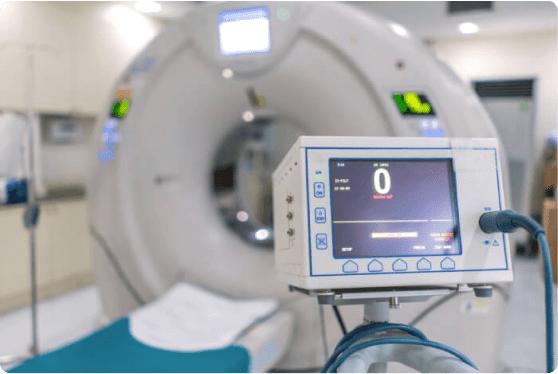Bihar Buddhist Circuit Tour: A Spiritual Journey Through the Land of Enlightenment

Bihar, nestled in eastern India, is the cradle of Buddhism. The Bihar Buddhist Circuit Tour connects the most revered sites associated with Buddha’s life and teachings, offering travelers a profound blend of spirituality, history, and cultural immersion. It’s here that Prince Siddhartha transformed into the Buddha, the Enlightened One, and laid the foundation of a philosophy that transcends borders and centuries.
Whether you're a pilgrim seeking peace, a scholar tracing ancient wisdom, or a traveler drawn to timeless landscapes, this circuit promises an unforgettable journey.
🌳 Bodh Gaya: The Epicenter of Enlightenment
No Buddhist pilgrimage is complete without visiting Bodh Gaya, the site where Siddhartha Gautama attained enlightenment under the Bodhi Tree.
-
Mahabodhi Temple: A UNESCO World Heritage Site, this towering temple complex houses the sacred Bodhi Tree and the Vajrasana (Diamond Throne) where Buddha meditated.
-
Bodhi Tree: A direct descendant of the original tree, revered by pilgrims from around the world.
-
International Monasteries: Thai, Japanese, Tibetan, Bhutanese, and Vietnamese monasteries offer architectural beauty and spiritual diversity.
Bodh Gaya is the spiritual heart of the Bihar Buddhist Circuit Tour, radiating peace and reverence.
🕉️ Rajgir: The Teaching Grounds
Located in Nalanda district, Rajgir was a favorite retreat of Buddha and the site of many important sermons.
-
Griddhakuta (Vulture’s Peak): A hilltop where Buddha delivered key teachings, including the Lotus Sutra.
-
Venuvana Vihara: The first Buddhist monastery gifted by King Bimbisara.
-
Japanese Peace Pagoda: A gleaming white stupa offering panoramic views and a cable car ride to the summit.
Rajgir’s serene hills and historical ruins make it a vital stop on the circuit.
📚 Nalanda: The Ancient University of Wisdom
Just a short drive from Rajgir lies Nalanda, once the world’s first residential university and a global center of Buddhist learning.
-
Nalanda University Ruins: Spread across 14 hectares, these red-brick structures include lecture halls, dormitories, and temples.
-
Nalanda Archaeological Museum: Houses artifacts, sculptures, and manuscripts from the ancient university.
-
Xuanzang Memorial Hall: Dedicated to the Chinese monk who studied and taught at Nalanda in the 7th century.
Nalanda reflects the intellectual brilliance of Buddhism and its global influence.
🪷 Vaishali: The Birthplace of Sangha
Vaishali, once the capital of the Licchavi Republic, holds deep significance in Buddhist history.
-
Ashoka Pillar: Erected to commemorate Buddha’s last sermon in Vaishali.
-
Relic Stupa: Said to contain Buddha’s ashes.
-
Ananda Stupa and Kutagarasala Vihara: Sites where Buddha frequently stayed and taught.
Vaishali is also where Buddha allowed women to join the monastic order, marking a revolutionary moment in spiritual history.
🧘♂️ Kesariya: The Tallest Stupa in India
Located in East Champaran, Kesariya Stupa is believed to be one of the tallest and largest Buddhist stupas in the world.
-
Historical Significance: Buddha is said to have given his begging bowl to the people of Kesariya before heading to Kushinagar.
-
Architecture: The stupa stands at 104 feet and dates back to the 3rd century BCE.
Kesariya offers a quiet, majestic stop on the Bihar Buddhist Circuit Tour.
🛕 Gaya: The City of Salvation
While Bodh Gaya is the spiritual epicenter, Gaya itself is a sacred city for both Buddhists and Hindus.
-
Vishnupad Temple: A Hindu temple believed to mark Lord Vishnu’s footprint.
-
Pretshila Hill: Associated with ancestral rituals and liberation.
-
Buddhist Caves and Sites: Scattered across the region, offering glimpses into early Buddhist architecture.
Gaya adds a layer of spiritual complexity to the circuit, bridging traditions and beliefs.
🧭 Suggested Itinerary (7 Days)
Day 1: Arrive in Patna, visit Patna Museum and Golghar
Day 2: Drive to Vaishali, explore Ashoka Pillar and Relic Stupa
Day 3: Travel to Nalanda and Rajgir, visit university ruins and Vulture’s Peak
Day 4: Head to Bodh Gaya, explore Mahabodhi Temple and monasteries
Day 5: Day trip to Gaya and return to Bodh Gaya
Day 6: Drive to Kesariya Stupa, explore and rest
Day 7: Return to Patna or extend to Kushinagar (Uttar Pradesh)
This itinerary offers a balanced experience of history, spirituality, and cultural immersion.
💡 Travel Tips
-
Best Time to Visit: October to March for pleasant weather and festival season.
-
Local Transport: Taxis, buses, and Buddhist Circuit Tourist Train available.
-
Language: Hindi and English are widely spoken; local dialects include Bhojpuri and Maithili.
-
Etiquette: Dress modestly, remove shoes before entering temples, and maintain silence during prayers.
🌍 Sustainable and Mindful Travel
The Bihar Buddhist Circuit Tour is not just a journey—it’s a pilgrimage. Travelers are encouraged to:
-
Support Local: Buy handicrafts from village artisans and eat at local dhabas.
-
Respect Sites: Avoid littering and follow temple protocols.
-
Engage Mindfully: Attend meditation sessions, interact with monks, and learn about Buddhist philosophy.
Final Thoughts
The Bihar Buddhist Circuit Tour is a transformative experience. It’s a journey through sacred landscapes, ancient wisdom, and living traditions. Whether you’re meditating under the Bodhi Tree, walking the ruins of Nalanda, or watching the sunrise over Vulture’s Peak, Bihar invites you to pause, reflect, and reconnect—with history, with humanity, and with yourself.




